60km Casoli to Ortona
The Commonwealth Sangro River War Cemetery
Ride Overview
After the crossing of the Apennines, today is a very different day, riding on a mix of farm tracks and quiet roads over the river wide river plain of the Sangro. The only climb of the day is up to the poignant and huge Commonwealth War Cemetery at Torino di Sangro, the resting place of over 2,500 soldiers. The final kilometres are along the Via Verde, a cycle track that runs for much of the Abruzzo coast. This section is by far the best, going through the Nature Reserve of Punto Aderci, and riding beside the trabocchi - old fishing platforms which jut out into the sea. The ‘Tyrrhenian-Adriatico’ finishes beside the walls of the spectacular Aragonese castle in Ortona, perched above the deep blue sea of the Adriatic.

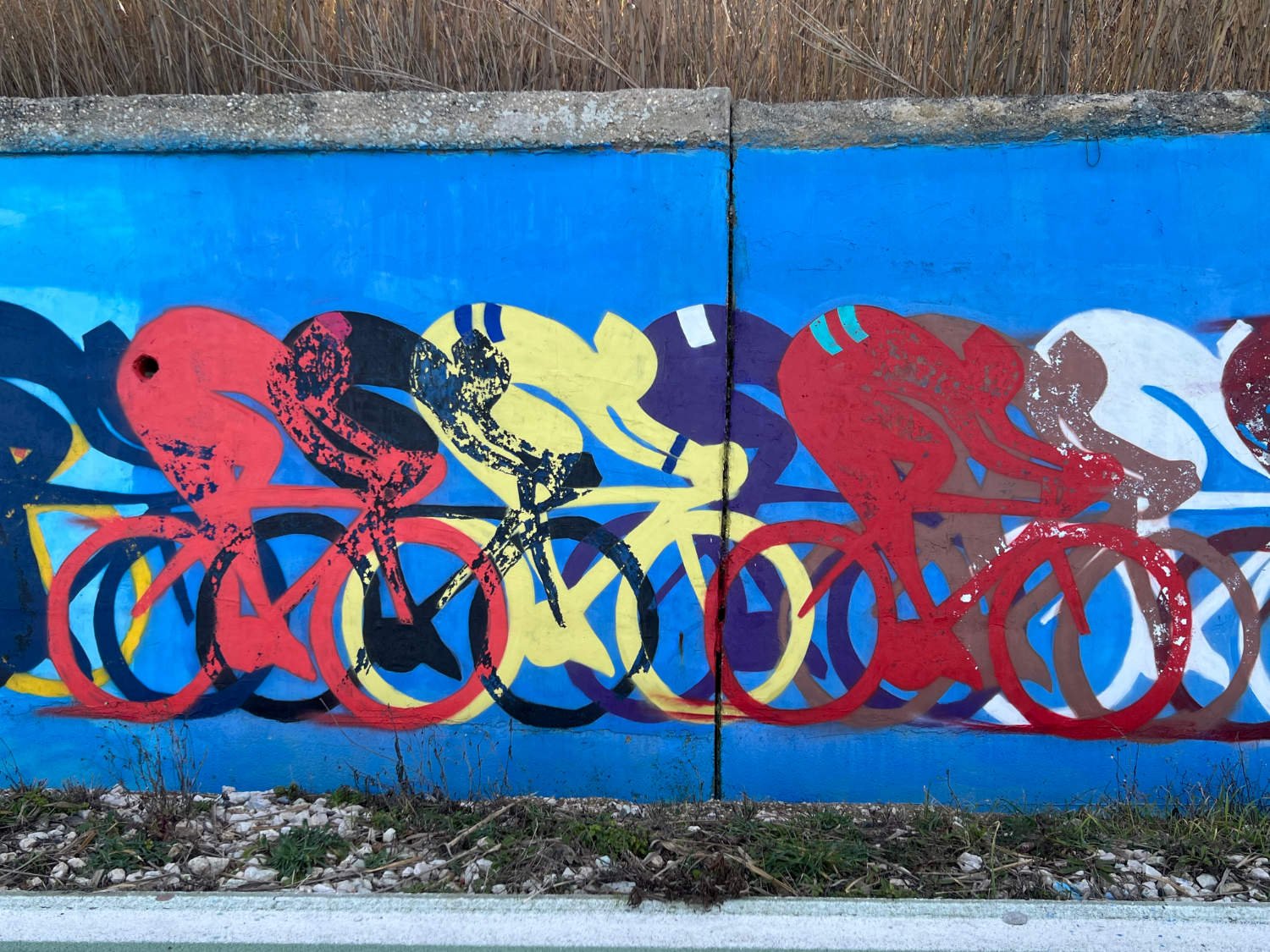

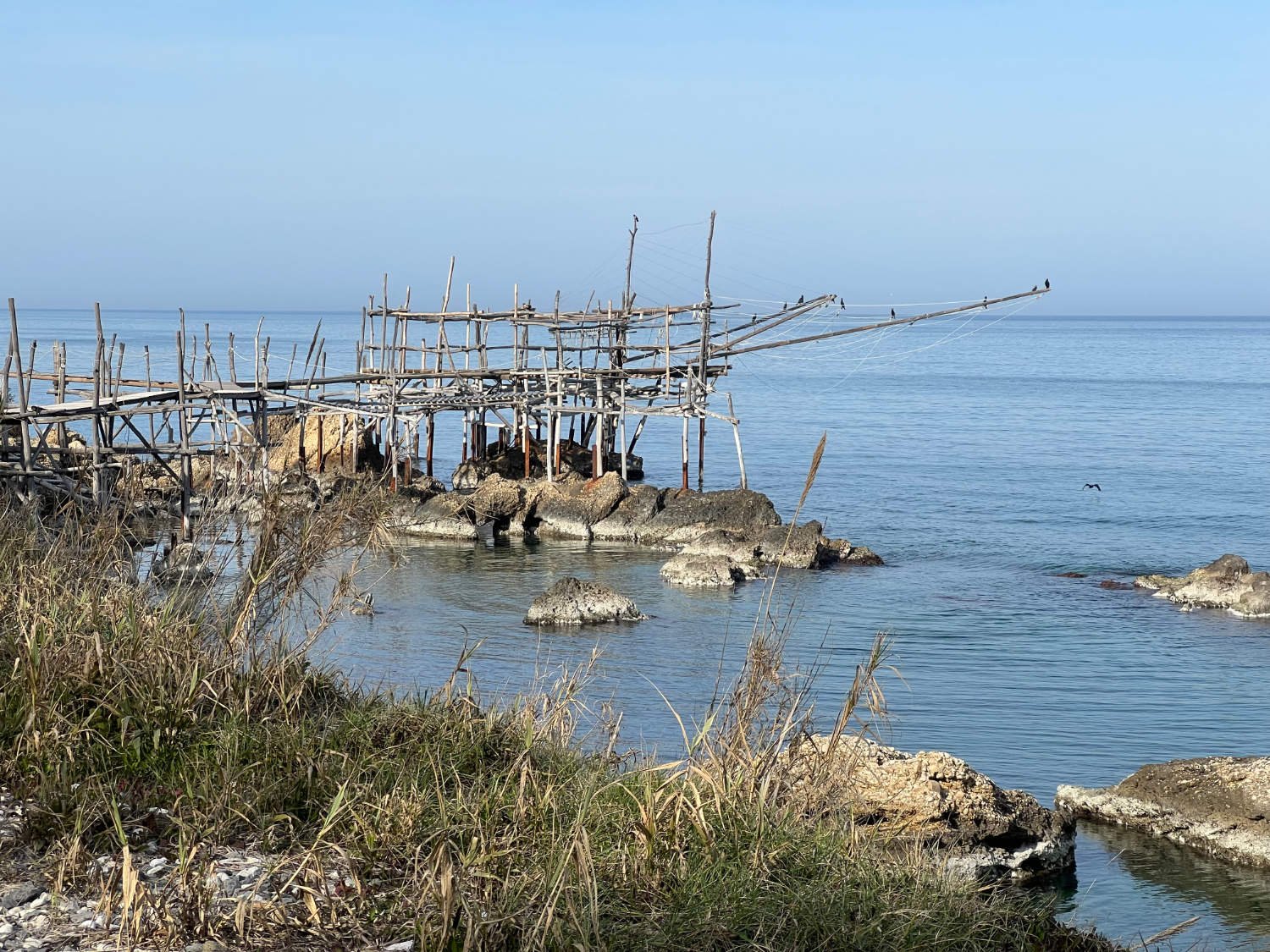
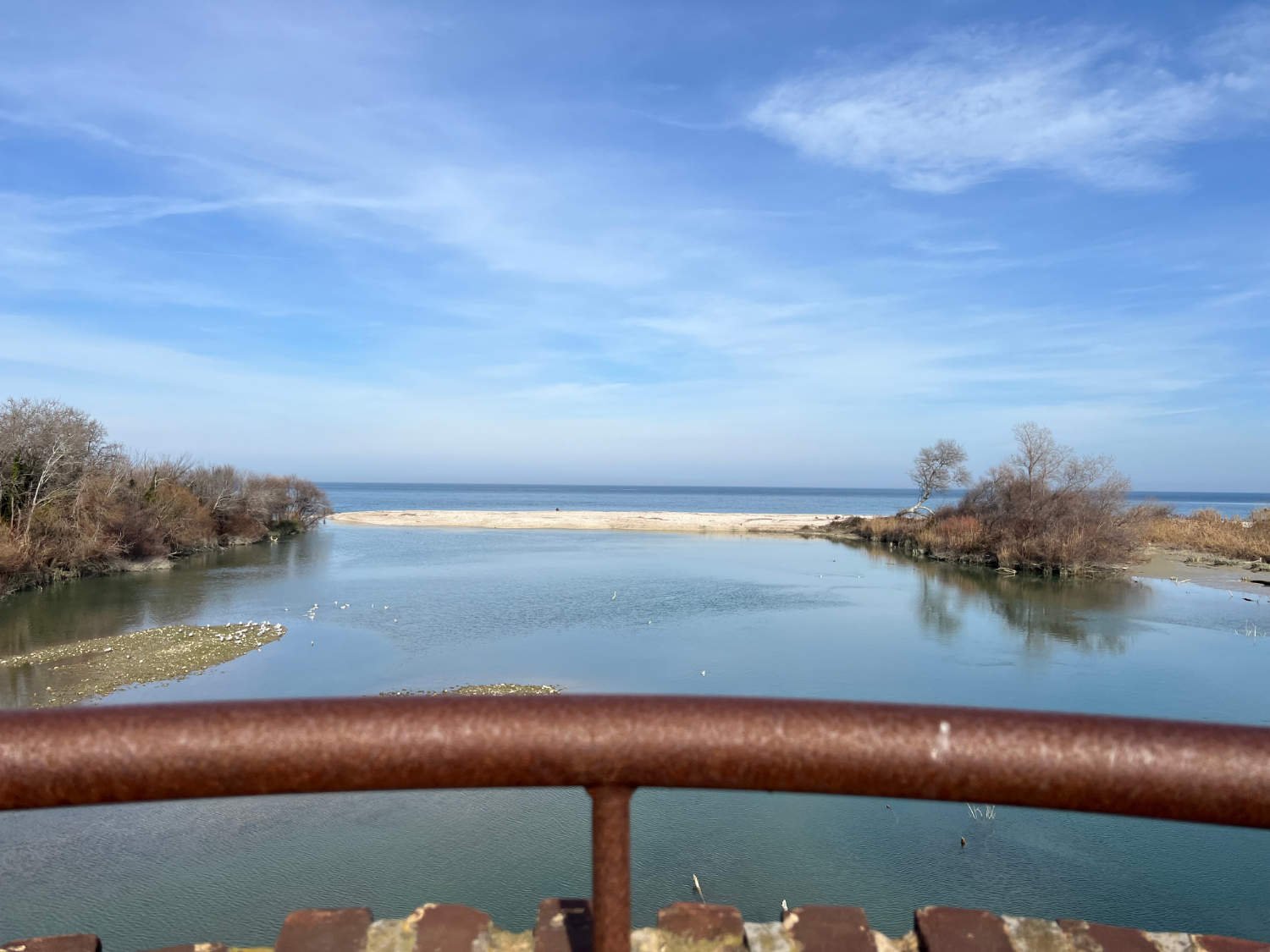

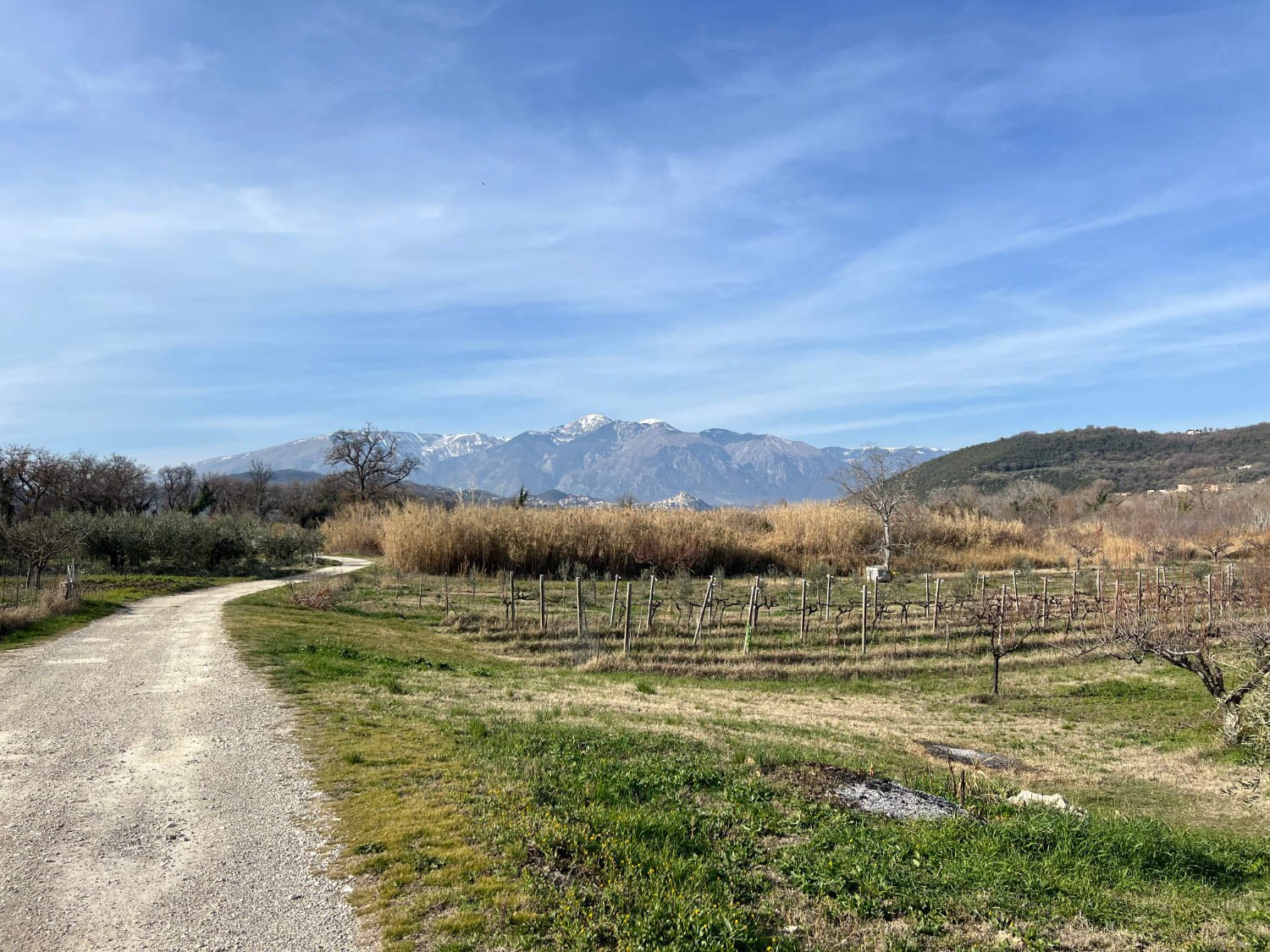

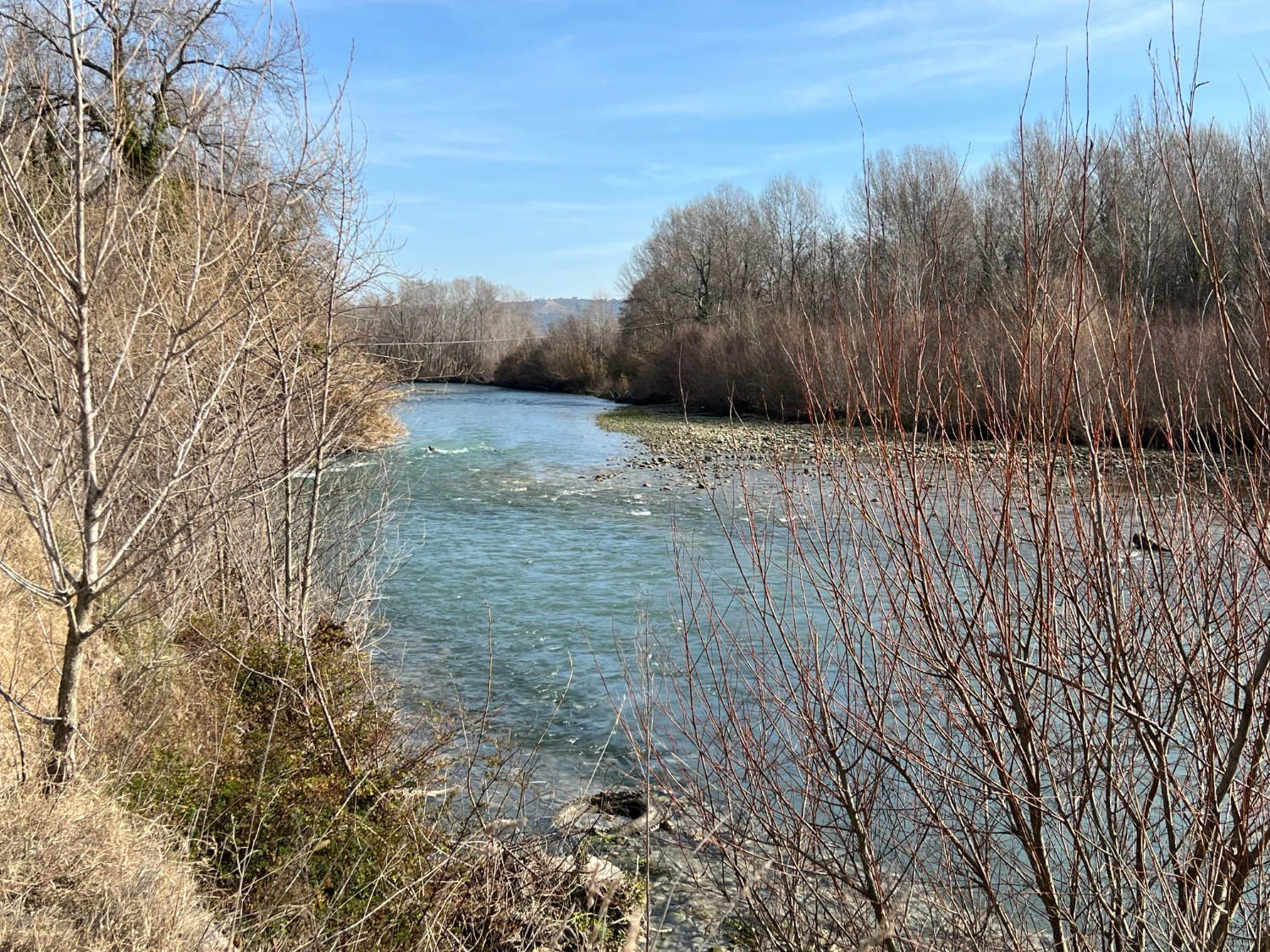
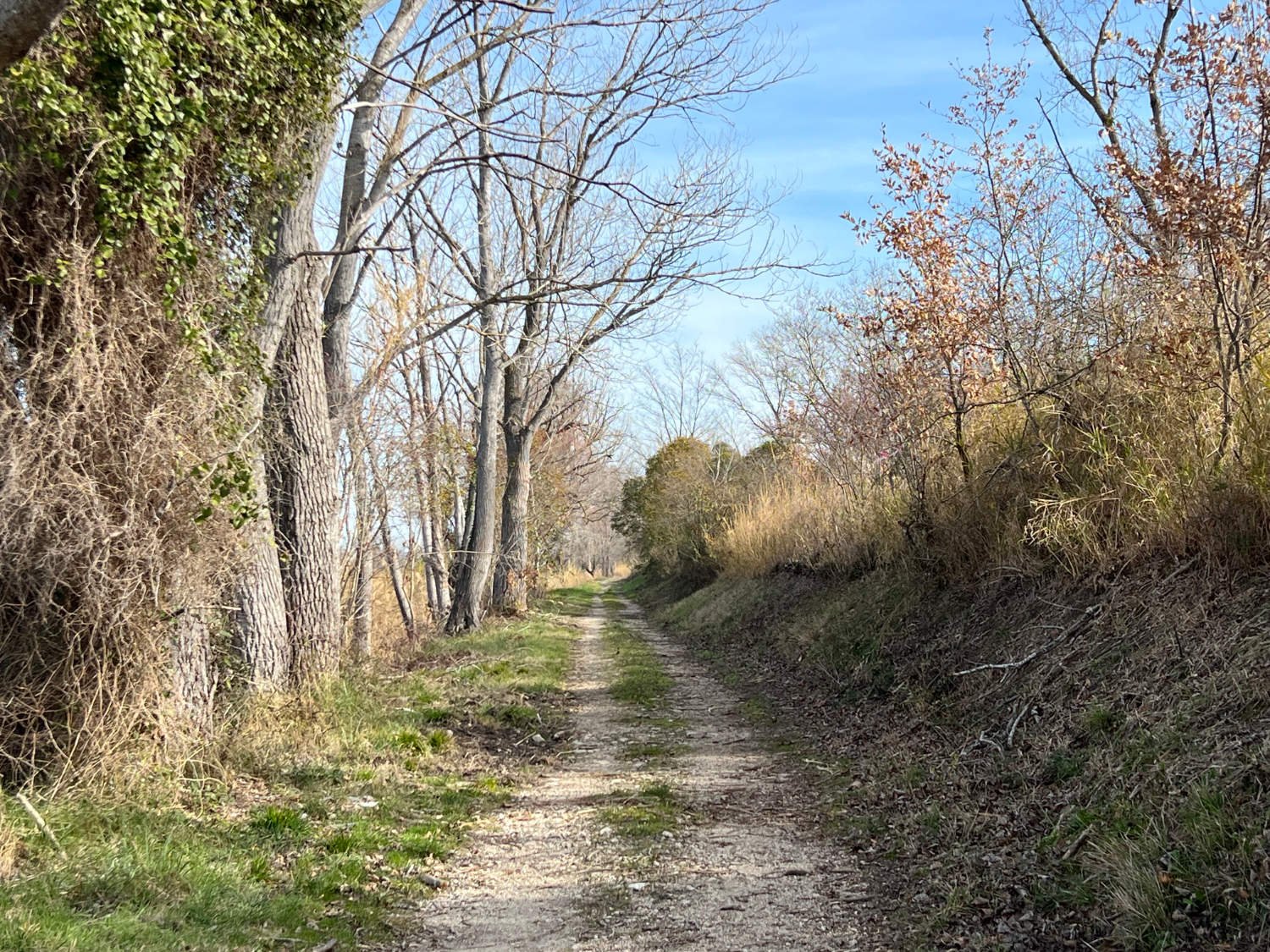
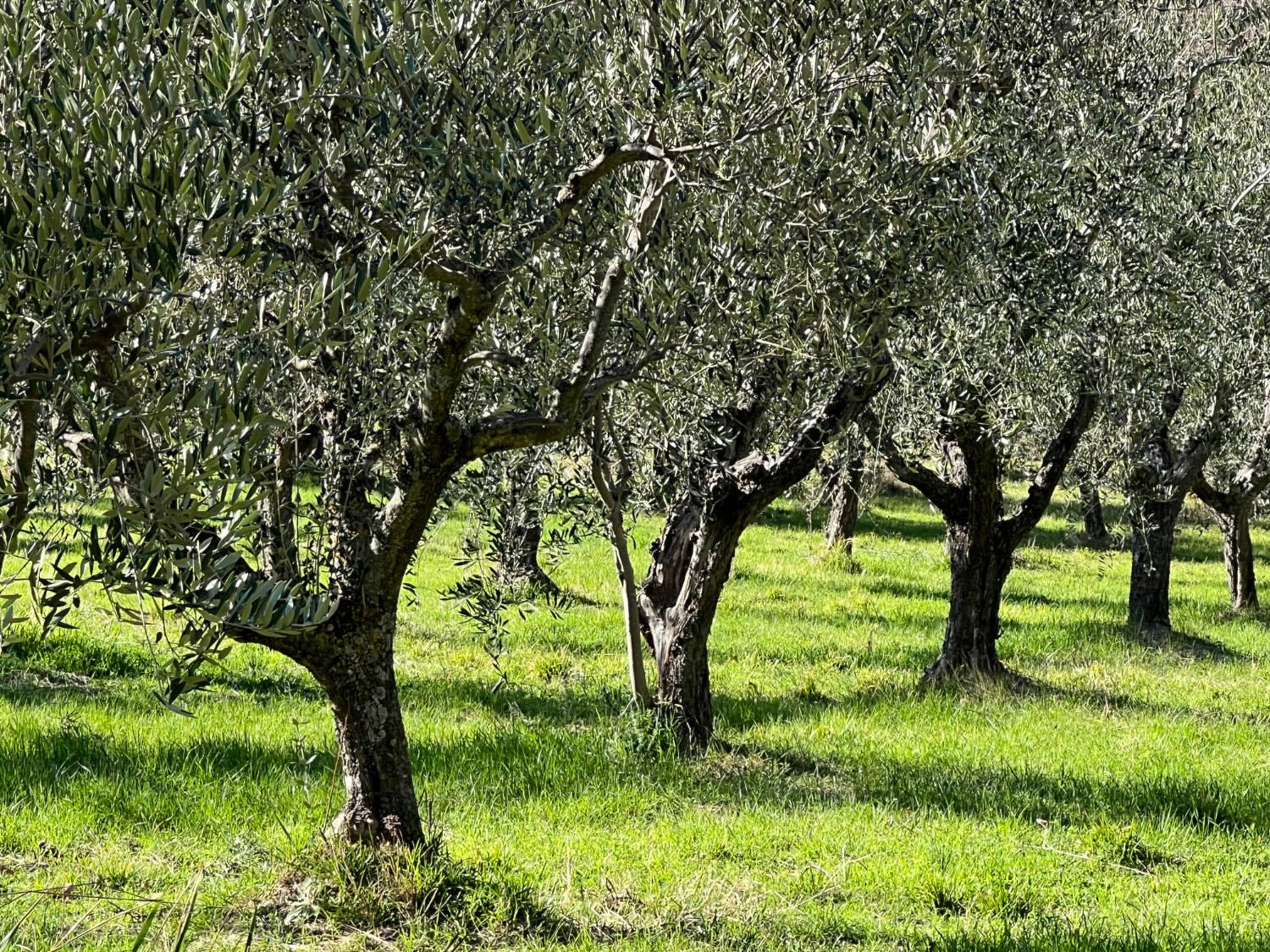
There are several ways of leaving Ortona once you’ve completed the ride. You could ride back to Rome on the Camino di San Tomasso. There are trains to Pescara and onto Rome Tiburtina. There are flights out of Pescara to London Stansted.
START/FINISH: Casoli/Ortona DISTANCE: 59km TOTAL ASCENT: 424m TERRAIN AND SURFACES: hard-packed farm tracks which can be muddy after heavy rain, quiet country roads and a superb traffic-free bike path along the coast FOOD: San Vito Chietino; Il Frantoio, ACCOMODATION: Check the usual apps MAINLINE TRAIN SERVICES: Ortona LINKS TO OTHER RIDES:
Ride notes
Casoli, the self-styled ‘city of oil’, looks spectacular in the morning light, as the hill-top town is surrounded by olive groves and with the snow topped Mailla behind. Leaving the Ducal Castle and the maze of honeycombed streets, you quickly ride downhill to the SS81 which will be busier than anything that you rode on yesterday. However, the distance is short and mainly downhill before you turn off and ride onto a series of earthen farm tracks through vineyards, groves of olives, and fields of fruit and grain. There’s plenty of tangled scrub land too. The dried brown leaves of the giant reed (Arundo donax L.). Th browns of winter are especially lovely when contrasted with the Madonna-blue sky of winter.
The Commonwealth War Cemetery, Torino di Sangro
The riding is flat and easy, although you’ll need to pay attention to the route as there are several turns. It’s a very rural route, and you can easily see how easy it was to defend. The Allied soldiers in order to advance a few more metres, often had to wade across the cold-blue Sangro at night and attack forward posts. Men drowned weighed down by their kit as they crossed. Roads and fields were mined. After some delightful country riding, the route jacks up a short and steep hill to the Commonwealth War Cemetery, where 2,617 soldiers - New Zealanders, Canadians, South Africans, Indians and British men - are buried, including Lionel Wigram. . With war again being fought on Europe’s boundary, the Commonwealth War Cemetery is a salutary reminder of the price of peace. It is, like all the Commonwealth War Cemeteries, immaculate.
Arundo donax L
From the Cemetery, you plunge down a cliff on a service road, through a nature reserve filled with evergreen trees. It is quite startling to suddenly arrive into a lush woodland where the birds sing, after the stark and bare woods and rocks that you’ve ridden through on the journey from Gaeta. Crossing the Adriatica main road using the underpass, you arrive at the sea. Oh the delight of it, Your body relaxes, the ozone is rich and best of all, there is a superb bike path, the Via Verde, to ride on. Your bid farewell to the Sangro as you cross it for the final time and head northwards.
The Via Verde and Trabocchi coast
The Abruzzesi are very proud of this new addition to their landscape. A ‘green road’ dedicated for cycling and walking runs along the old railway line beside the sea and is one of the longest seaside cycle paths in Europe. The Giro d’Italia used it for the opening Time Trial stage of the 2023 edition of the race. It is beautiful riding; the gentle sea, the beaches and coves, the trabbocchi, the many restaurants serving the freshest of sea food. The route is entirely flat and it would be easy on a winter’s day with few others sharing the path, to speed along. But this would be a mistake. Linger, enjoy the sea air and the ride. Stop for lunch.
The wooden fishing platforms, known as trabocchi, look like giant sea spiders complete with web. They are wooden fishing platforms brought here by the Phoenicians over 2,000 years ago. The first documentary evidence dates from the 18th century. There are other similar constructions along the Keralan Coast in India and perhaps the idea and design was brought over from there by sailors sometime in the early medieval times.
A mural near Ortona celebrating the coming of the Giro d’Italia
Ortona has long been a port, certainly since the Roman occupation of the Fretani tribal lands, (which you’ve just ridden through). Other invaders left their marks upon the town, including the Aragonese who built the castle. The town was likened to Stalingrad by Winston Churchill, so bitter was the house to house fighting. It was the Canadians who led the attacks and they have their own cemetery above the town, accessed only from the busy main road. Inside the two, the star attraction for Christian pilgrims are remains of the Apostle Thomas who lies inside the cathedral, whose body was ‘rescued’ from India in 1258.
There are several ways of arriving in Ortona for the start of this trans-peninsula ride; cycle from Rome along the Camino di San Tomasso to take a train or bus from Rome Tiburtina, or to fly to Pescara and ride (or take the train) the short distance to the town. It may take a morning or more to arrive in the town, or you may just want to settle into the ride gently, or possibly the temptation of a good seafood lunch along the Trabocchi coast is just too good to resist. Whatever the reason, this is a short and relatively easy first day.
The Via Verde and a Traboccho
The Abruzzesi are very proud of this new addition to their landscape. A ‘green road’ dedicated for cycling and walking runs along the old railway line beside the sea and is one of the longest seaside cycle paths in Europe. The Giro d’Italia used it for the opening Time Trial stage of the 2023 edition of the race. It is beautiful riding; the gentle sea, the beaches and coves, the trabocchi, the many restaurants serving the freshest of sea food. The route is entirely flat and it would be easy on a winter’s day with few others sharing the path to speed along and make up time. But this would be a mistake. Linger, enjoy the sea air and the ride. Stop for lunch.
The wooden fishing platforms, known as trabocchi, look like giant sea spiders complete with web. They are wooden fishing platforms brought here by the Phoenicians over 2,000 years ago. The first documentary evidence dates from the 18th century. There are other similar constructions along the Keralan Coast in India and perhaps the idea and design was brought over from there by sailors.
The Sangro river is crossed at it enters the sea. This was the eastern end of the Gustav Line. The battle for this piece of land was brutal and bitter. Every yard, every potential crossing point, every farmhouse was fiercely contested. After a short but steep ride up the cliffs, you arrive at the final resting point of the 2,617 soldiers who died in the battle, including New Zealanders, Canadians, South Africans, Indians and British men. With war again being fought on Europe’s boundary, the Commonwealth War Cemetery is a salutary reminder of the price of peace.
Every route on this website has been carefully researched as well as ridden. However situations on the ground can change quickly. If you know of changes to this route, or cafes, pubs and the like which you think other cyclists need to know about, feel free to share your thoughts below.
If you enjoyed this guide, why not subscribe to the website so as not to miss other inspirational routes?
wheremywheelsgo.uk is a Feedspot UK Cycling top website





